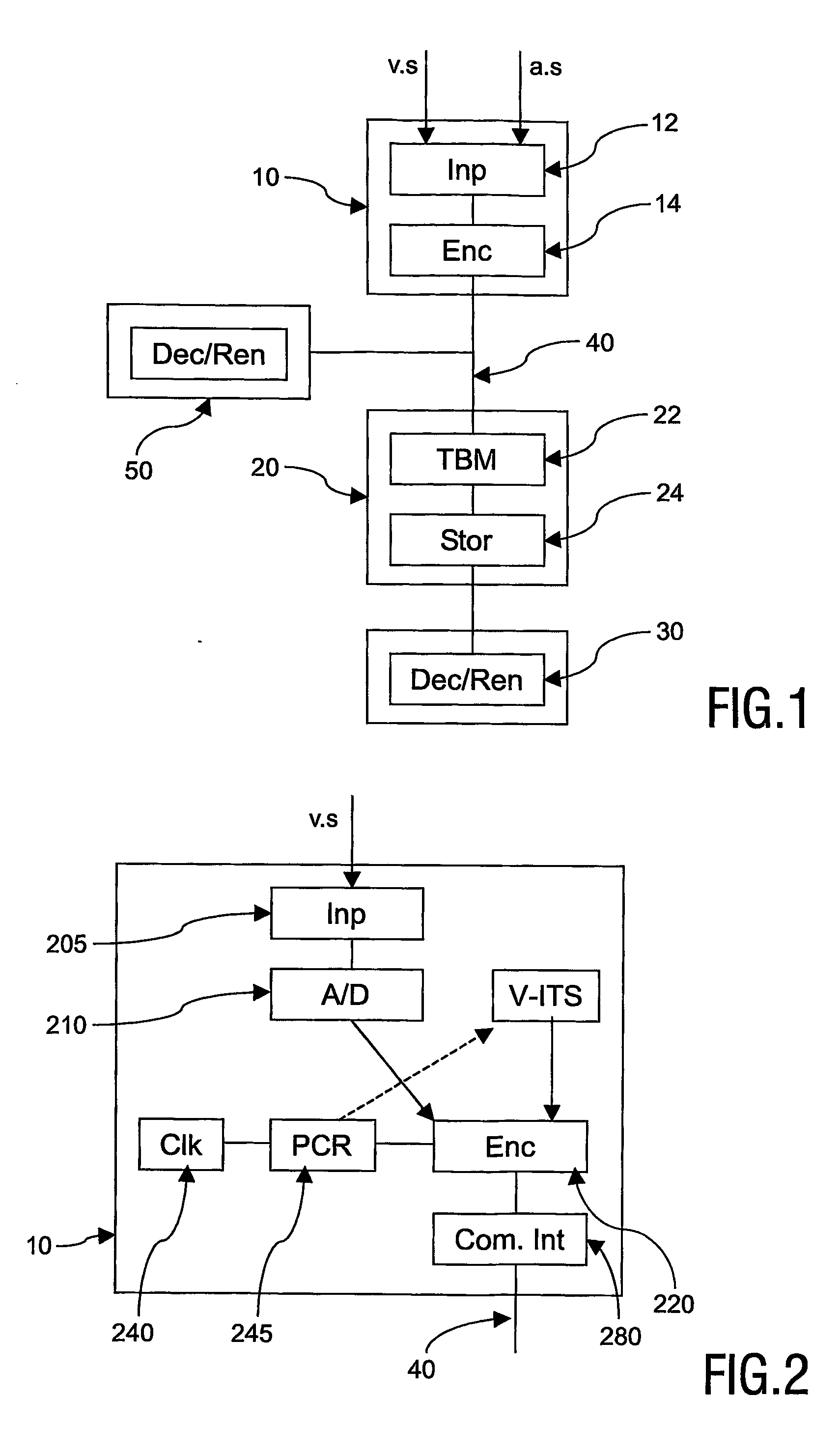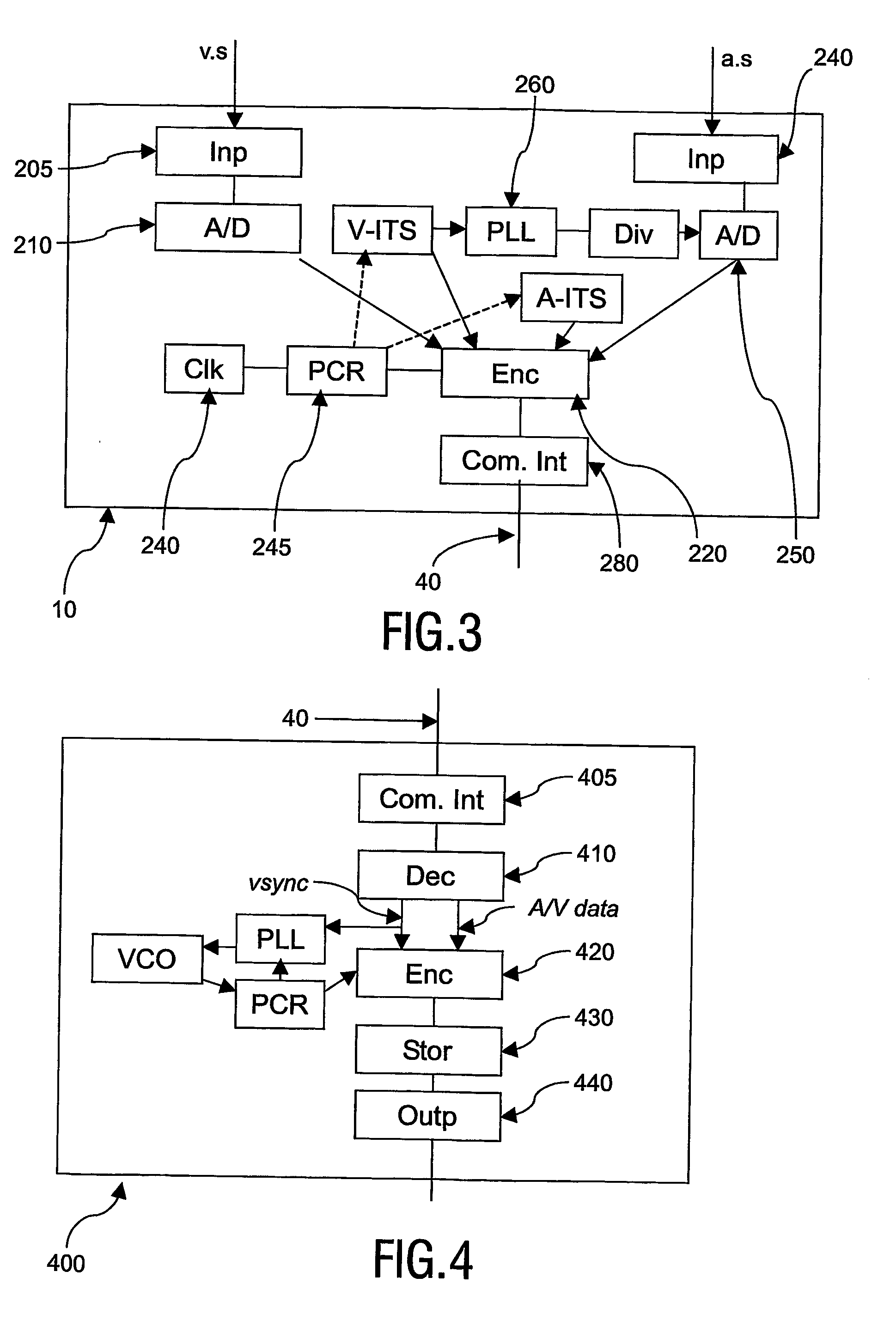System for modifying the time-base of a video signal
a technology of video signal and time-base, which is applied in the field of system for modifying the time-base of a digital video stream, can solve problems such as skip or repeat frames, and problems such as rendering problems, and achieve the effect of loss of quality
- Summary
- Abstract
- Description
- Claims
- Application Information
AI Technical Summary
Benefits of technology
Problems solved by technology
Method used
Image
Examples
Embodiment Construction
[0032]FIG. 1 shows a block diagram of the system according to the invention. The system includes an encoding device 10, a storage device 20 and a decoder / renderer 30. The encoding device 10 includes an input 12 for receiving at least one video signal. In the example of FIG. 1, it receives a video signal v.s. and an audio signal a.s. The encoding device 10 also includes an encoder 14 for encoding the AV signal(s) to an encoded stream for supply to at least the storage device 20 via a digital communication system 40. The encoding and transfer is according to a predetermined encoding standard. In a preferred embodiment, it complies with MPEG2. However, persons skilled in the art will be able to apply the principles also to other encoding / transmission formats. Any suitable communication system may be used. To enable stream-wise pushing of the data, the communication system preferably provides at least one isochronous communication channel. Suitable communication systems include, but are...
PUM
 Login to View More
Login to View More Abstract
Description
Claims
Application Information
 Login to View More
Login to View More - R&D
- Intellectual Property
- Life Sciences
- Materials
- Tech Scout
- Unparalleled Data Quality
- Higher Quality Content
- 60% Fewer Hallucinations
Browse by: Latest US Patents, China's latest patents, Technical Efficacy Thesaurus, Application Domain, Technology Topic, Popular Technical Reports.
© 2025 PatSnap. All rights reserved.Legal|Privacy policy|Modern Slavery Act Transparency Statement|Sitemap|About US| Contact US: help@patsnap.com



